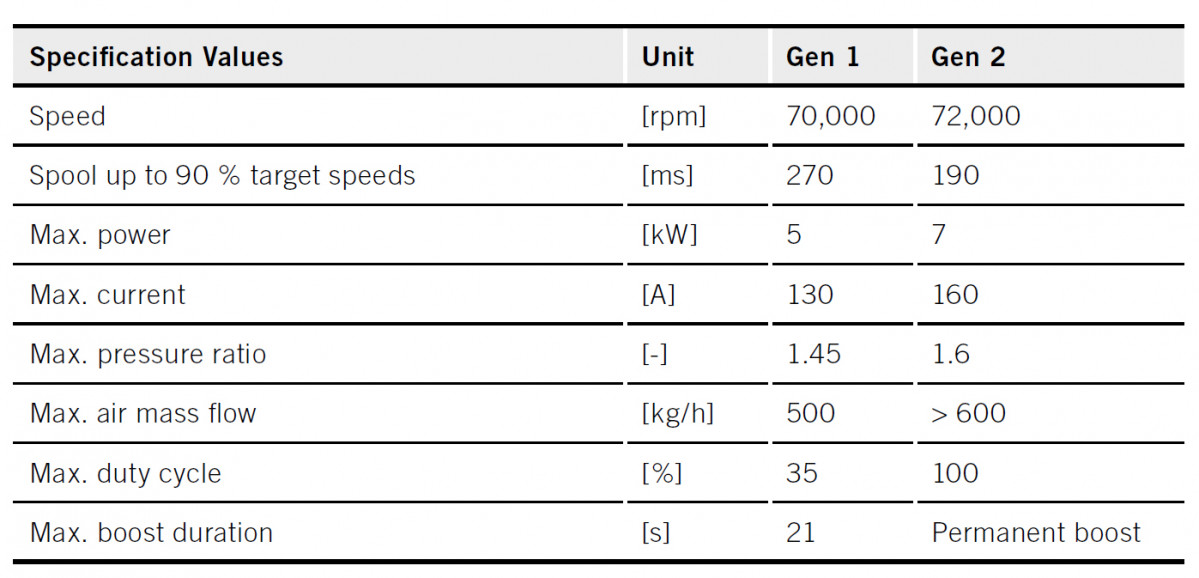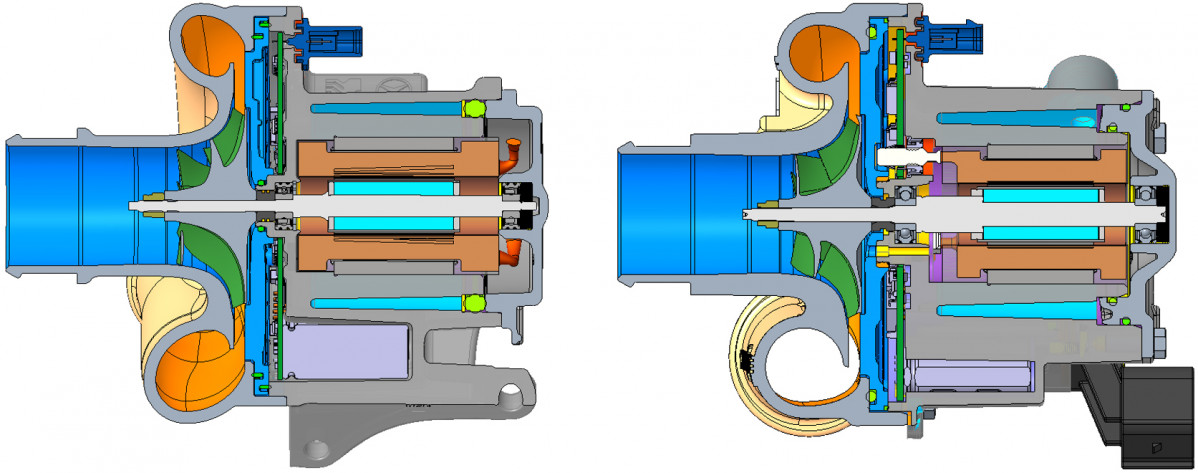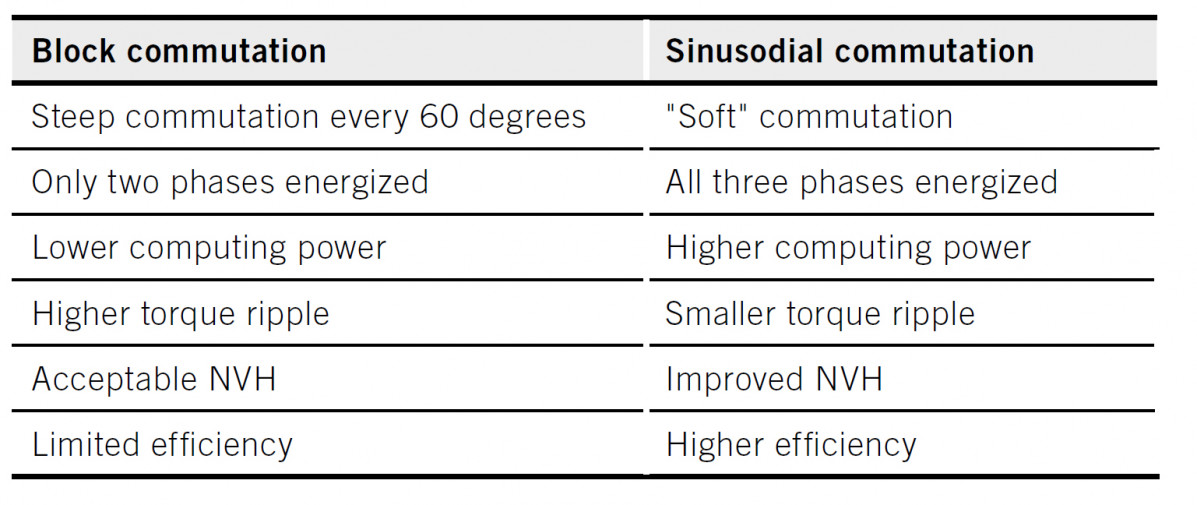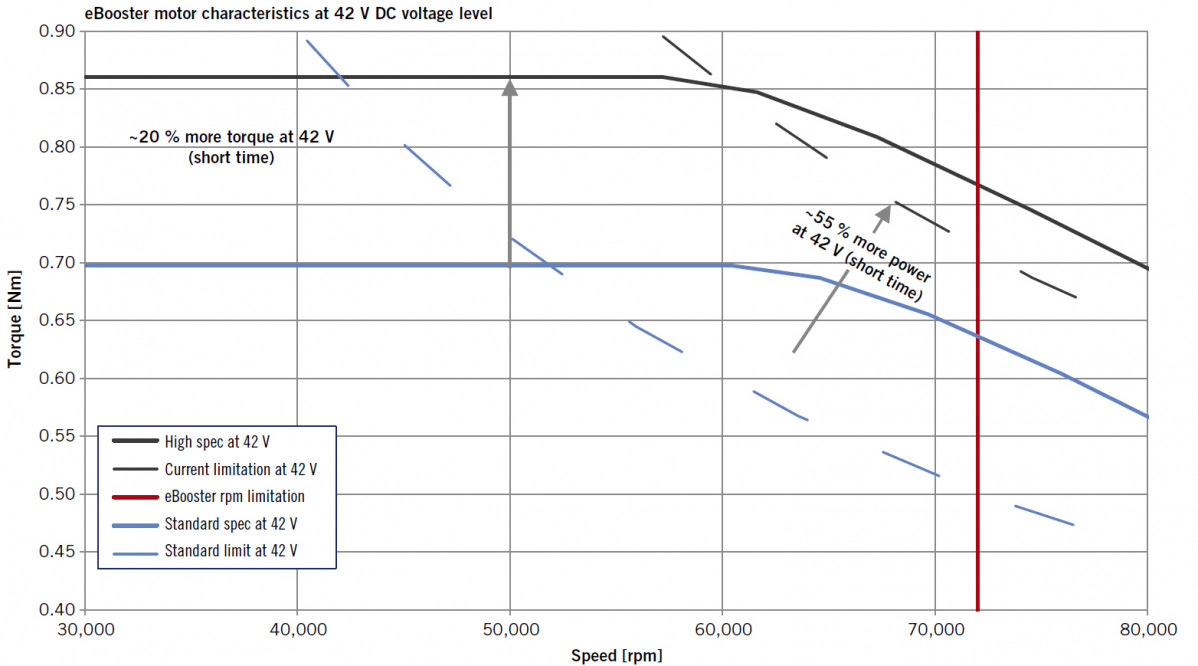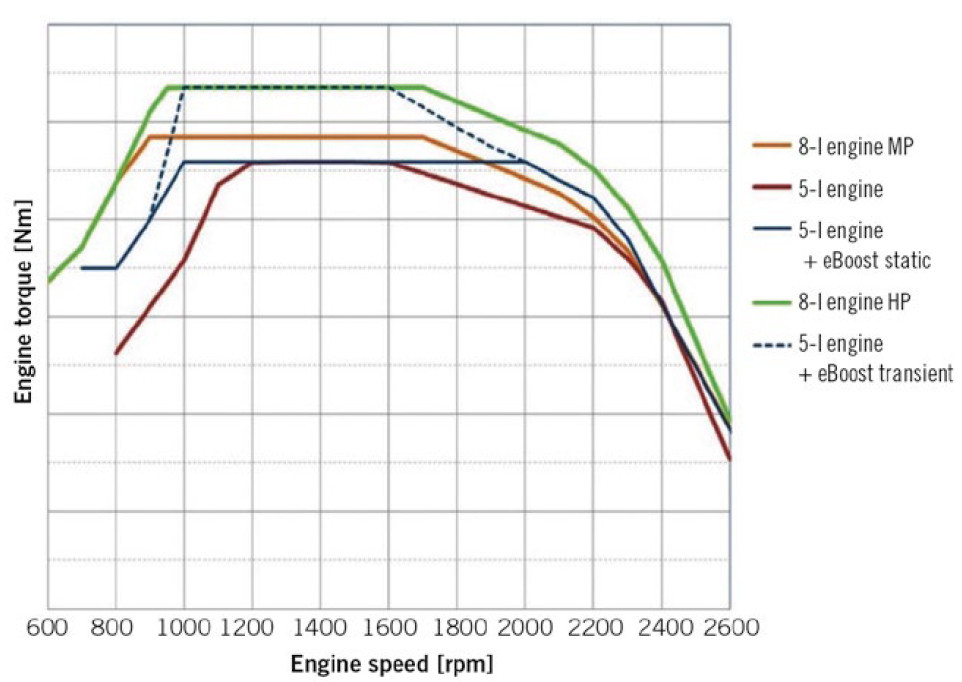BorgWarner Gen2 eBooster
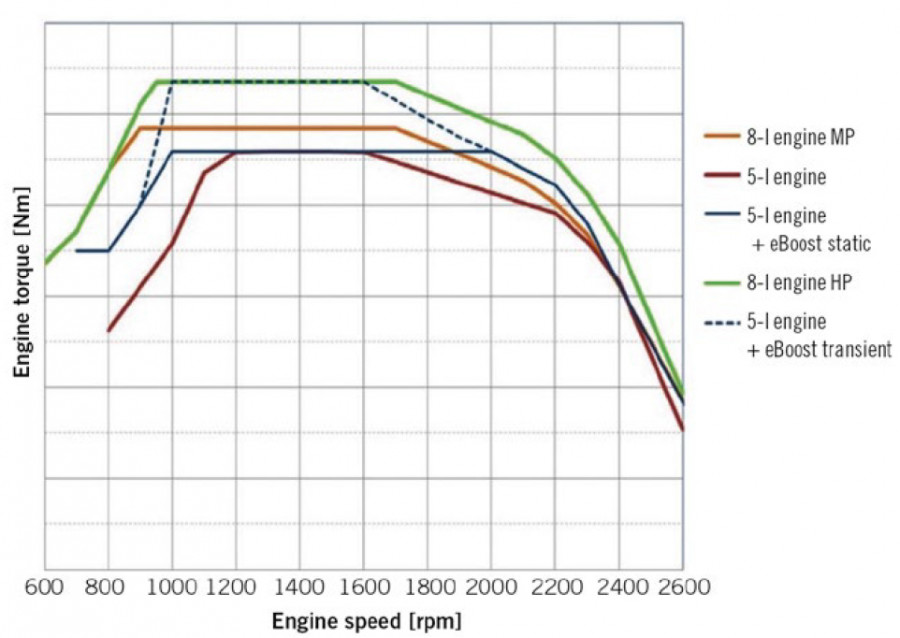
The growing shift to vehicle system electrification has broadened the use of electrically supported charging with the recent enhancements now made possible by power electronics advancements and higher voltages. Driven by these changing industry needs, BorgWarner has released its 2nd generation of the eBooster. In addition to improved function and durability, innovations in this electrically driven compressor include improved electrical efficiency and noise, vibration and harshness (NVH), along with more compact size to conform with modern small engines.
Introduction
Reducing fuel consumption through downsizing and downspeeding has become increasingly important to the automotive industry as it strives to comply with strict emission regulations. Additionally, in order to provide an improved driving experience, better low-end torque and transient engine performance is required. To meet these growing challenges to deliver both fuel efficiency and performance, leading OEMs
have turned to different powertrain electrification methods, like 48V electrical systems. The second generation of BorgWarner's eBooster offers significant improvements in both efficiency and performance from high-voltage power supply by delivering high-power electric boosting for superior lowend torque and transient response with no turbo lag.
The use of electrically driven compressors continues to increase in support of vehicle electrification, new voltage thresholds, advances in electric motor, electronics and microprocessor technology. Designed as a two-stage system BorgWarner Knowledge Library 2020 where the turbocharger covers full load operation, the second generation of BorgWarner's eBooster is able to maximize efficiency at low loads. Higher engine power output is attained by separating electrical boosting from the turbocharger so that it can be matched to higher power, enabling lower backpressure in the exhaust manifold and improved gas exchange.
Continued Innovation
BorgWarner’s 48V electrically driven compressor was first introduced in 2017. It is now followed by the second generation eBooster, for which series production began in early 2020. Key development objectives for the Gen2 model were improving operating efficiency along with enabling continuous usage with 2.5 kW, compared to the earlier model which enabled just transient boosts of max. 5 kW for 20 seconds per minute.
The first generation eBooster utilized a permanently excited synchronous motor (PMS) which reduced the energy requirement during acceleration substantially compared to a traditional reluctance motor. The PMS also significantly improved both NVH and engine response along with torque density and efficiency. Based on these advantages, BorgWarner continues to utilize the permanent magnet electrical motor in its latest generation of the eBooster model. To improve performance even further, the moment of inertia of the rotor and compressor was reduced, thus enabling lower power usage and faster spoolup. See Table 1 for detailed comparison of Gen1 to Gen2.
Table 1: Gen1 vs. Gen2 eBooster key technical data.
The Gen2 eBooster features many additional enhancements: a compressor with reduced inertia wheel for increased power efficiency, a rigid rotor designed for higher speeds, a new EMC choke designed for lower power losses and enhanced filter effect, a stator linked to the power electronics for reduced resistance and
improved efficiency, a microcontroller with added computing capacity for Field Oriented Control (FOC) and modelbased software component protection for uninterrupted operation. See Fig. 1 for a cross section view of Gen1 vs. Gen2 with similarities and changes.
Fig. 1: Gen1 vs. Gen2 eBooster cross sections.
Sinusoidal Commutation Advantages
Another important upgrade from the Gen1 to the Gen2 eBooster is the use of sinusoidal commutation in place of a block commutation. Sinusoidal commutation provides a smoother transition while generating less ripples in the current compared to more rapid variations with a block commutation. Sinusoidal commutation also enables lower eddy current losses in the electrical motor to deliver higher peak power
and continuous operation of the eBooster. From the DC voltage, a three-phase commutation with variable frequency and amplitude is generated to drive the PMS motor and a sensorless FOC algorithm is used to generate signals for the switches of the three half bridges of the power output stage. Table 2 highlights the advantages of sinusoidal over block commutation.
Table 2: Sinusoidal vs. block commutation comparison.
For operation points at very low voltage or at high speed with reduced torque requirements, FOC enables the PMS motor to operate in a field weakening area by splitting the phase currents into two vectors of field generating current (id) and torque generating current (iq).
Additional attributes of the latest Gen 2 eBooster design are faster current and speed control, current measurement of all three phases, 40µs cycle time of PI controller, 28 kHz PWM, over-current protection for the hardware and software and permanent boost from model-based component protection.
Fig. 2 shows FOC related performance enhancements in detail, including power output and torque of the electrical motor in comparison to the electrical motor speed. A higher power output is achieved by the new EMC filter supporting a more powerful DC supply. For 48V systems under load and with reasonable state of charge, voltage is normally at 42V. The limits at low voltage and higher speed can now be increased by 55% for a short time through the positive effect of the field weakening.
Fig. 2: Gen2 eBooster torque and power advantages.
Advanced Component Protection
For enhanced component protection, the printed circuit board (PCB) of the Gen2 eBooster has three negative temperature coefficient (NTC) sensors to measure coolant temperature in key areas along with the power electronic part of the PCB. A sophisticated model is used to measure these critical temperatures through the sensors.
Thus, an intelligent derating of the eBooster secures component protection based on the highest tolerable temperatures in critical areas. This temperature model will protect eBooster components from excessive thermal loads even in heavy usage conditions. Calculated temperatures are transferred into a range of
percentage which is used to develop a utilization index, with the highest temperature setting the utilization index percentage which is conveyed to the electronic control unit through the CAN interface. Temperature warnings and an "over-temperature” alert can then be raised according to the utilization index.
New EMC Filter Design
Like the first-generation model, the Gen2 eBooster uses an EMC filter between the main PCB and the DC supply. In order to achieve the dual objectives of additional power and a lower cost, a redesign was required. To accomplish this, a new concept was developed where the choke was optimized to work as
filter in common and differential mode.
For the Gen2 eBooster, the differential mode choke and the common mode choke were combined into one part. With this new design, the ferrite core utilizes the ferrite outer ring as the common mode path and the tongue combined with an air gap and the outer ring as a defined differential mode path. This provides for low DC losses due to the bus bars' low current density, while the differential mode can be influenced by the core design with the flux remaining mostly in the ferrite core.
Added Efficiencies for CV Applications
Due to its configuration, BorgWarner’s Gen2 eBooster can also be applied to commercial vehicle applications of up to 5 liters of displacement. The additional combustion air that can be added through this boosting technology now makes it possible for medium duty engines to replace engines 50-60% larger without losing power or torque, at the same time maintaining and even improving transient behavior. See Fig. 3 for a stationary comparison of various concepts on the dyno test bench.
Fig. 3: Comparison of stationary engine dyno test results with and without eBooster.
Summary
BorgWarner’s advanced eBooster technology augments conventional turbocharging by enabling engine downspeeding and downsizing, thus providing improved fuel economy. The latest Gen2 model uses the 48V board net level for 7 kW electrical power and, with its more sophisticated motor controls, continuous operation at 2.5 kW. This optimizes low-end-torque in steady state engine operation. Power electronics, electric motor and compressor efficiencies have all been improved, leading to excellent overall efficiency and a reduced load on the vehicle electrical system. Additional key performance improvements such
as electromagnetic compatibility and enhanced NVH behavior have been achieved as well. The Gen2 eBooster supplies boost pressure even at low engine speeds, with a spool up time of less than 190 milliseconds, for exceptional engine response. These advantages are now available for both passenger car and commercial vehicle applications.

Las ventas de vehículos electrificados (eléctricos e híbridos enchufables, comprendiendo turismos, cuadriciclos, vehículos comerciales e industriales y autobuses) mantienen un ritmo ascendente y logran un aumento del 152,5% en julio, con 22.898 unidades, que supone el 19,28% del mercado total.

El mercado del automóvil sigue mostrando fortaleza en 2025. En julio, las ventas de turismos registraron un aumento del 17,1%, alcanzando las 98.337 unidades, muy cerca de la simbólica barrera de las 100.000 entregas.

El Grupo Volkswagen incorpora Microsoft Copilot en Codebeamer, la plataforma de gestión del ciclo de vida de las aplicaciones (ALM, por sus siglas en inglés) de PTC, partner de Microsoft, para afrontar la creciente complejidad del desarrollo de vehículos.

Iveco Group, fabricante europeo en vehículos comerciales y movilidad, y el grupo indio Tata Motors, han anunciado que han alcanzado un acuerdo, por el que la compañía asiática adquiere ala firma italiana, para crear un grupo de vehículos comerciales con el alcance, la cartera de productos y la capacidad industrial necesarios para convertirse en líder mundial

La sostenibilidad es un tema cada vez con mayor importancia en la cultura empresarial. Los criterios ESG (Environment, Social and Governance), vertebran gran parte de las acciones de las compañías. Ante este contexto hemos hablado con Carolina López, gerente de Comunicación y Sostenibilidad de SERNAUTO.

